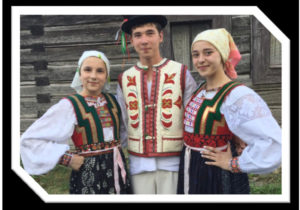Ingredients: 1 liter milk, 10 eggs, 1 tablespoon salt, 1 teaspoon pepper
Preparation Time: 30 minutes of cooking, 3 to 4 hours setting time.
Pour one liter of milk into a pot. Turn on low heat. Add 10 eggs to the milk. Add salt and pepper. Mix the mixture well with an egg beater, but do not beat vigorously. A double boiler is not needed for this process, just be sure not to let the mixture scorch at the bottom, but honestly a little scorching will not harm anything.
Stir constantly (about 20-30 minutes) until the mixture separates into curd-like pieces and whey-like “white water.” Cook the mixture for a few minutes after the white water appears.
Pour the mixture into a strainer lined with a cheesecloth or a porous kitchen towel. Pour off the water, collect the solids. Squeeze out the liquid, being careful not to burn yourself.
Tie the cloth tightly and hang it in a place where it can drip dry. Some use a kitchen faucet for this purpose, others use a wooden spoon placed on top of a pot.
Tie the top of the towel with a string to help create a more ball-like shape. Allow the hrudka to cool. Squeeze it a few more times before the process is complete, taking effort to really squeeze the water out of it.
Place it in the refrigerator to protect from spoiling. Allow it to set for 3 or 4 hours and unwrap it. It can be stored for 2 or 3 days in aluminum foil and sometimes longer. When the hrudka has gone bad, it will be apparent that it is bad, because of the noticeable smell of rotten eggs. Until that point it is okay to eat.
The variations are unlimited. Fresh ingredients like chopped parsley or chives can be added when the white water appears and should be stirred in. Some families make very salty hrudka. Some families add a little sugar to this recipe. Some families make their hrudka very spicy.



